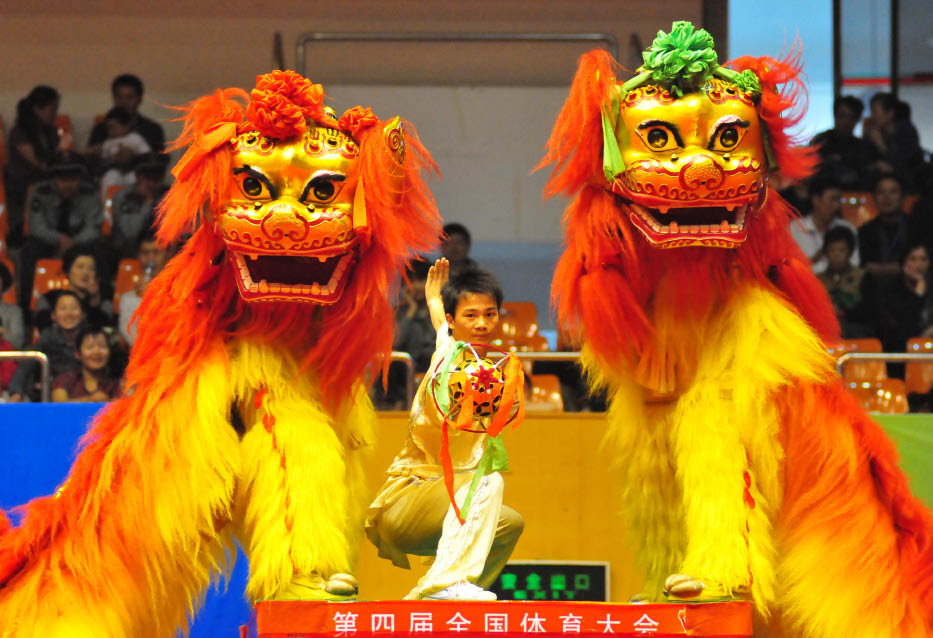Lion Dance
Lion Dance
|
 |
|
The northern lion is simpler and similar to the real animal. |
THE lion, in Chinese eyes, is king of the animals, a symbol of strength, courage and good fortune. In traditional festivals like the Spring Festival and on joyous occasions including weddings and inaugurations, people imitate lions in the lion dance to ward off evil spirits and bring good luck. The dance is performed by a symbolic lion or lions accompanied by three musical instruments – drum, gong and cymbal. Movements and rhythm are coordinated, and each of the lion's actions is associated with its own particular beat. Variations and elaborations on the basic beats keep the dance complex and the audience transfixed. All over the world it is recognized as representative of Chinese culture.
Over its thousand-year history, the performance developed two genres – the northern and southern lion dances. The northern version is popular in its home territory, which includes Beijing, Hebei and Shanxi provinces, while its counterpart prevails in the south, centered on the traditions of Guangdong Province. The northern lion is simpler and similar to the real animal; the southern lion is nonrepresentational in its appearance.
In both of the northern and southern forms, the lion dance can be performed by two people in one costume with a large head, followed by a long garment of colorful cloth decorated with strings, tassels and bells. One performer holds a lion's head with both hands and his legs move to imitate a lion's front legs. Another performer crouches at the lion's tail and his legs play the hind legs of the animal. The dancers wear clothes that match the color and design of the lion head, usually red, orange and golden.
In northern form, a red knot on the head indicates a male lion and a green one represents a female. In southern form, enormous eyes and a mirror on the forehead are chief characteristics – demons are believed to be scared of the reflection of a mirror. The lion dance can also be performed by individual dancers to play a small lion.
The northern lion dance used to be an entertainment for imperial families in the past and so often mimics gentle and frolicking lions in joyful play with each other. Generally, the lions tumble about in pairs or as a family unit, displaying an array of stunts such as balancing on a giant rolling ball or climbing up a pole. Not surprisingly the coordination and athletics required for this call for superior acrobatic skills.
Services
Economy
- Eco-agriculture and Eco-tourism Power Nanchang’s Green Development
- Balance Environmental Protection and Economic Prosperity – Nanchang Looks to European Technology for Green Development
- Sustainable Growth Requires Wiser Energy Use
- Chinese Economy: On the Path of Scientific Development
- China's Economy over the Last Ten Years

